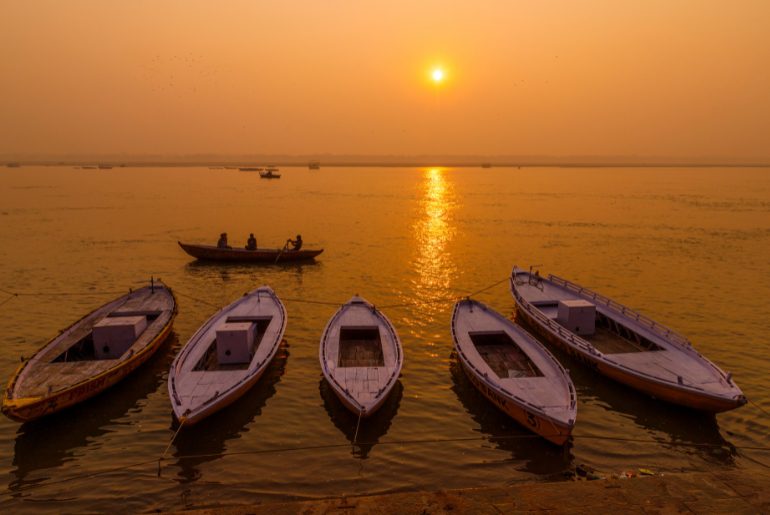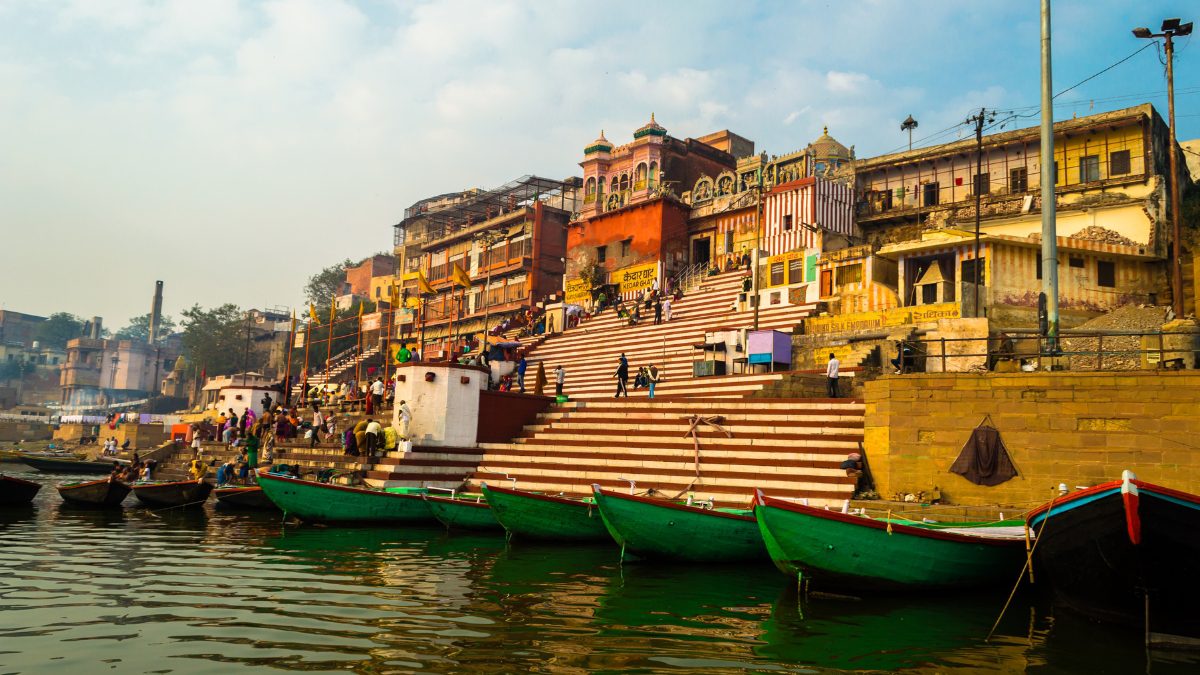In the heart of Varanasi, amidst the ancient ghats and the eternal flow of the Ganges, a new chapter in India’s maritime history unfolded. Spearheaded by the visionary Prime Minister Shri Narendra Modi and guided by the astute Union Minister of Ports, Shipping, and Waterways, Shri Sarbananda Sonowal, the city witnessed the inauguration of groundbreaking initiatives poised to redefine urban water transport and sustainable tourism.
Varanasi’s Green Waterways Initiatives Gain Momentum

At the forefront of this revolution stood two hybrid electric catamaran vessels – MV Guh and MV Nishadraj. Crafted by the skilled hands of Cochin Shipyard Limited (CSL) under the aegis of the Inland Waterways Authority of India (IWAI), these vessels herald a new era of eco-friendly commuting. MV Guh will gracefully navigate the tranquil waters of the River Saryu in Ayodhya. Meanwhile, MV Nishadraj will glide along the sacred Ganges in Varanasi. According to India Shipping News, with a seating capacity of 50 passengers each, these marvels of engineering with reduce carbon emissions by a staggering 400 MT annually. They also aim to rejuvenate religious tourism in the region.
On the ghats of Varanasi, the inauguration of four community jetties happened. The foundation stone for 13 more along National Waterway 1 (NW 1) in Varanasi and National Waterway 110 in Mathura and Prayagraj was also laid. The ambitious Jal Marg Vikas Project (JMVP) endeavours to enhance the navigability of the 1390 km stretch of NW1. It offers a lifeline of prosperity to the communities nestled along its banks. Sixty community jetties, integral to JMVP’s vision, seek to empower local farmers, traders, and industries by facilitating seamless access to markets.
Also Read: From Idli To Pakora, 26 Indian Dishes Flagged As Biodiversity Threats By Scientists; Here’s The List
Unveiling Eco-Friendly Vessels & Community Jetties

The Quick Pontoon Opening Mechanism System (QPOMS) was also introduced. Designed to expedite the dismantling and reassembly of kulfi pontoon bridges across NW-1, this ingenious system promises to slash the time from six hours to a mere 30 minutes. According to India Shipping News reports, it will also ensure uninterrupted flow for vessels and vehicular traffic alike.
These initiatives not only symbolise a paradigm shift towards sustainable development but also epitomise the collaborative spirit between the government, stakeholders, and local communities. As India charts its course towards a greener future, bolstered by the Maritime India Vision (MIV) and the Maritime Amrit Kaal Vision 2047, it embraces a holistic approach to maritime sector growth, connectivity enhancement, and environmental stewardship.
Also Read: From Goa, With Hemp! CanaCraft, India’s First Hemp Lager Beer Hits The Scene
With these waterways initiatives, India is certainly sailing towards clean energy, responsible tourism, and inclusive prosperity converge.
Cover Image Courtesy: Canva
For more such snackable content, interesting discoveries and the latest updates on food, travel and experiences in your city, download the Curly Tales App. Download HERE.





